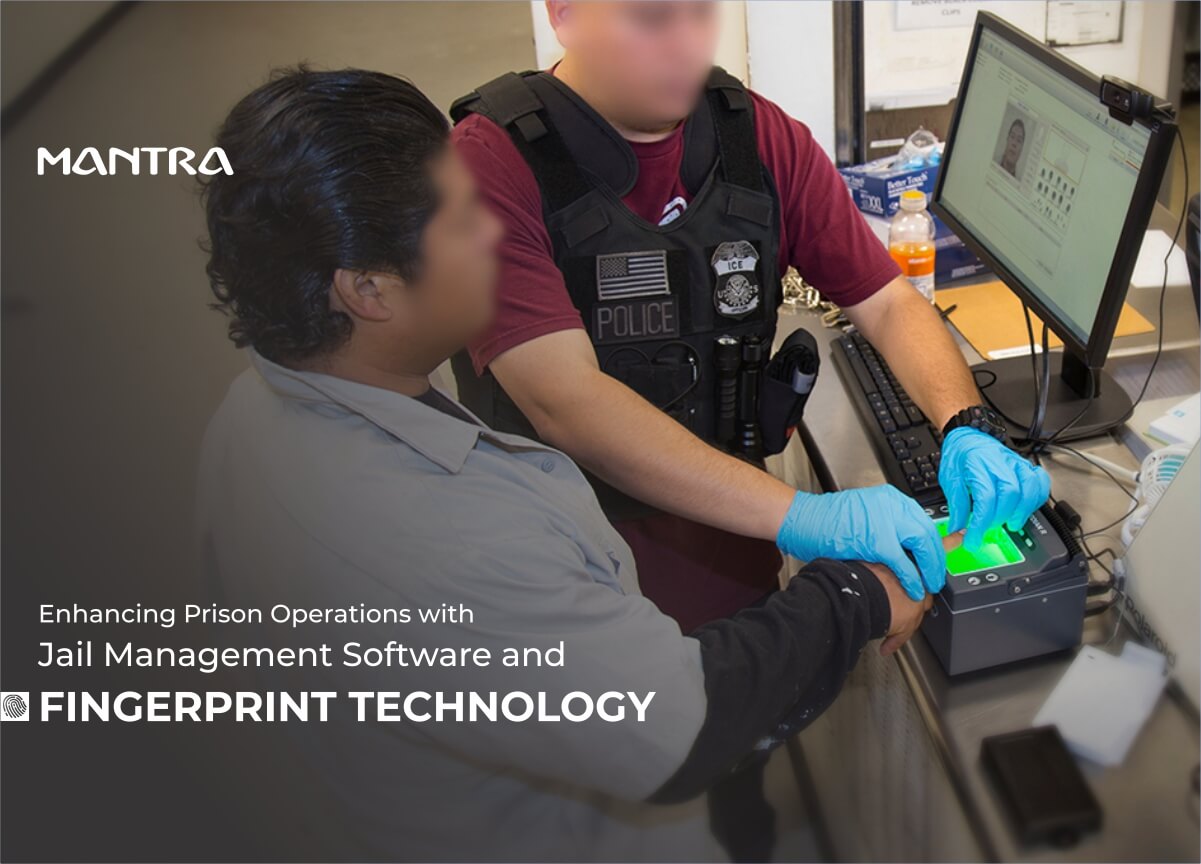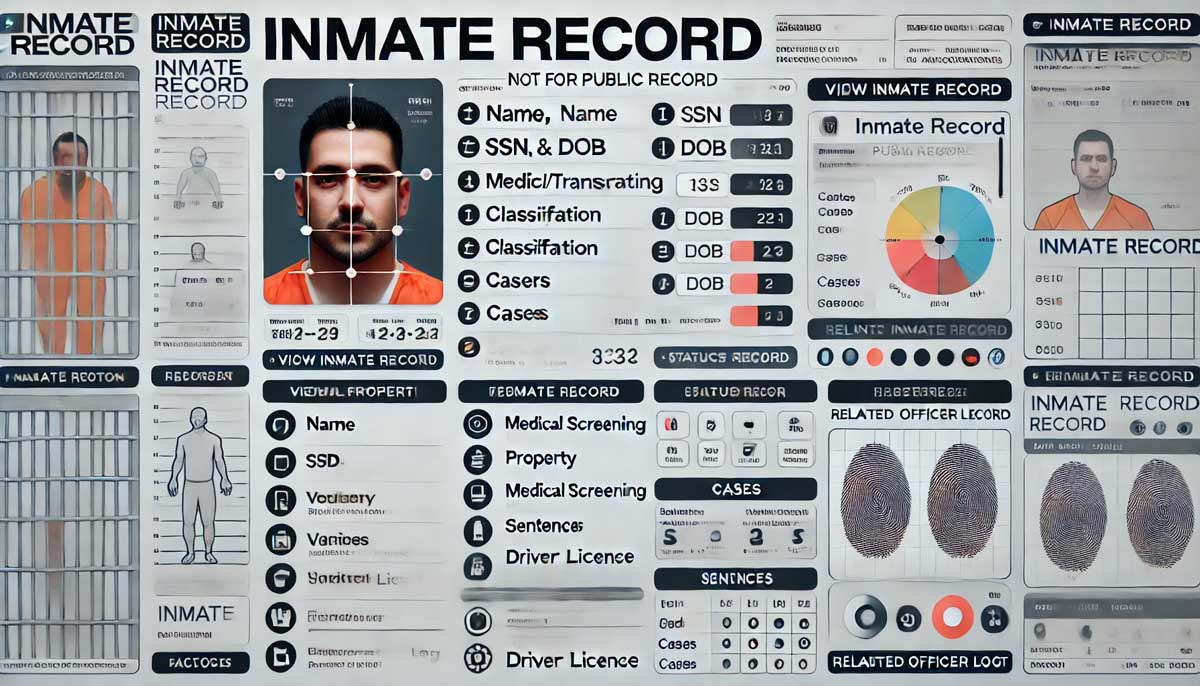
Prison operations face numerous challenges, particularly in maintaining security, surveillance, and effective visitor management within correctional facilities. The imperative to ensure the safety of both inmates and staff while preventing unauthorized access demands robust systems that can withstand evolving threats. Traditional methods often fall short in managing the complex dynamics of modern jails, where illicit activities pose constant risks.
At its core, Jail Management Software (JMS) facilitates the organization and management of vast amounts of data related to inmates, staff, visitors, and facility operations. It provides functionalities to track inmate movements, manage bookings and releases, maintain detailed records of inmate demographics and legal status, and oversee inmate housing assignments. JMS typically includes modules for managing visitor access and scheduling, maintaining inmate medical records, tracking incidents and disciplinary actions, and generating comprehensive reports for administrative purposes and compliance requirements.
In addition to enhancing operational efficiency and data accuracy, modern JMS solutions often incorporate advanced features such as integration with biometric identification systems for enhanced security, automated workflows for streamlined processes, and data analytics tools for informed decision-making. Overall, a JMS plays a vital role in promoting safety, security, and transparency within correctional facilities.
Evolution of Fingerprint Technology in Prison Facilities
The adoption of fingerprint technology in correctional facilities dates back to the late 20th century, when fingerprint recognition systems began to gain prominence as a reliable method for identifying individuals. Initially, fingerprint data was collected and stored manually, requiring cumbersome paperwork and manual verification processes. However, the advent of digital fingerprint scanners and biometric algorithms has revolutionized biometric identification.
In recent years, the integration of biometric technology, particularly fingerprint recognition, with JMS has emerged as a transformative development in correctional facility management. This integration significantly enhances security, streamlines administrative processes, and improves overall operational efficiency within jails and prisons.
Implementation of Fingerprint Technology in Jail Management System
Including fingerprint recognition technology in JMS can be seen as a logical development in automating inmate processing. Specifically, through collection of the digital fingerprint data in the JMS database, correctional facilities can employ the use of biometric authentication to improve on the level of security, methods of identifying the inmates, as well as track and manage them more effectively.
For this reason, the fingerprint system has to be compatible with the jail management software to avoid major problems when integrating the two. To interface the two systems, specifically implemented APIs (Application Programming Interfaces) or SDKs (Software Development Kits) offered by the fingerprint sensor manufacturer are incorporated. Integration should make it possible for inmate biometric data to be synchronized in real time with the jail database.

Key considerations for fingerprint integration
Implementation of fingerprint technology in the management of jails also has a number of challenges and necessary factors for proper functioning and data protection.
Scalability
The high rate of turnover of inmates means that there is need to handle large volumes of fingerprint data hence the importance of scalability. The system also needs to process new inmates and releases without causing backlogs or delays within the facility.
Database Optimization
It is very important for the database to be optimized for the quick storage and retrieval of fingerprint records. Methods like indexing and data partitioning also increase the speed of database operations while reducing the space they occupy. Distributed databases or NoSQL databases can also enhance scalability since the data can be distributed across various servers and nodes; leading to horizontal scaling as and when the workload increases.
Load Balancing and Parallel Processing
Load balancing helps to evenly distribute the incoming fingerprint requests in order not to put undue pressure on any particular server. This maximises the use of available resources and reduces on latencies. Parallel processing breaks down data into several small and separate pieces that can be processed concurrently and in shorter time. Multithreading and use of frameworks such as Apache Hadoop or Apache Spark, wherein the parallel processing capabilities help to scale up efficiently.
Security of Biometric Data
This means that it is very important to safeguard biometric information so that they cannot be accessed by the wrong people or abused. Encryption is another crucial concept in biometric data security, whether when transmitted in a network or when stored in data systems. In regard to privacy, fingerprint templates should be encrypted using the best encryption standards such as Advanced Encryption Standard (AES). Anti-tampering techniques should also be used to prevent spoofing through access to the FID through the JMS and user data transmission between the FID and the JMS should be encrypted using HTTPS or SSL/TLS to ensure secure transmission.
Digitization and physical access control.
A fingerprint data should be further protected using access control so that it is only accessible to individuals with certain roles and authorization level. Another feature is the use of the role-based access control (RBAC) so that only the authorized users will have the ability to read or alter certain biometric data. Security measures in place include audit trails and logging systems to help monitor access to the fingerprint data and identify cases of unlawful entry or intrusions. These include secure mounting solutions, anti-tampering enclosures, and CCTV security on the fingerprint sensors and devices to minimize cases of tampering and theft.
Security assessments and vulnerability scans are performed to determine whether the system has any security risks or frailties that could be exploited. Penetration testing involves the act of exposing an organization's security to actual conditions to test the efficiency of the control measures in place.
Benefits of Fingerprint Integration
The enhancement of fingerprint recognition technology with jail management system gives several advantages to correctional centres that include the personnel, detainees, and the public.
Enhanced Security
Apart from making access control even more secure, inmate fingerprint integration enhances efficiency in the identification of inmates in correctional facilities. Biometric authentication is also important as it provides only those people with a right to access those areas get an opportunity to do so, thus improving the overall security in a facility. Fingerprint integration can be considered helping to prevent identity fraud and other unauthorized person's impersonation because it does not rely on traditional identification means like ID cards or PIN numbers.
Efficient Inmate Identification
Biometric technologies such as digital fingerprint scanning that interfaces with JMS assists in fast and efficient identification of inmates various processes like booking, release and transfer. Fingerprint recognition saves the time and effort of entering inmate information manually, and also minimizes the possibility of making mistakes. During intake procedures biometric identification confirms the identity of inmates and accurately processes them, avoiding identity confusion or classification errors.
Streamlined Inmate Tracking
Fingerprint integration makes it easier for the correctional facilities to monitor the movement of the inmates within the facility, for instance the movement from cell to cell, to hospital, court and so on. Location tracking of inmates also helps in the effective management of an organization and reduces response time in case of mishaps or rebellion.
Improved Staff Productivity
It means that by automating the identification of inmates, the authorities will be able to save time that would otherwise be spent on entering information manually and confirming data. Minimizing clerical and paper-related work for correctional staff enables them to perform key functions like overseeing inmates, maintaining order, and providing reformation for offenders.
Accurate Record-Keeping
Biometric fingerprint information that is stored within the JMS database provides accurate and unalterable identification and authentication of inmates. With the help of fingerprint recognition, the information about inmates is complete and free from discrepancies or mistakes associated with identity issues.
Compliance and Accountability
The integration with JMS also improves the ability to meet legal and other standards for handling inmates and maintaining security. Through the regular documentation of the daily activities and movements of the inmates, the correctional facility becomes accountable to the public.
Cost Savings
Although fingerprint recognition technology and using JMS might require initial capital investment, when implemented it could save correctional facilities a lot of costs due to efficiency and security. Less administrative costs and efficient use of resources leads to inmate management in a more efficient and less costly manner.
Difficulties of Integrating Fingerprint Technology
Privacy Concerns
Combining fingerprint recognition with the JMS system is questionable in the eyes of the inmates and advocacy organizations. These measures should be adopted to protect such data and to meet the requirements of data protection laws. Strict measures should be put in place to ensure that privacy and protection of the gathered information is enhanced.
Technical Limitations
Biometric systems such as fingerprint recognition have limitations, including occasional false positive or negative readings, necessitating frequent updates and fine-tuning. Most often, the system requires constant monitoring and troubleshooting to solve issues that may cause discrepancies in the system.
Training and Adoption
It may be necessary for correctional staff to undergo some training in the use of the fingerprint integration with JMS. To enhance the adoption of biometric technology at the workplace, training should aim at encouraging staff to understand new procedures and working practices. competency of staff is essential in enhancing the performance of the integrated system.
Interoperability
Compatibility with existing JMS solutions and other inmate management systems requires compliance with interoperability standards. Information exchange and collaboration among multiple systems require integration and communication among the systems. Thus, compatibility testing and standardization are crucial in addressing the issues of interoperability and achieving integration.
Cost
The advantages of integration include considerable gains made over the long run; therefore, costs must be considered in the short run. The use of biometric technology requires capital investment in equipment, software, and having a baseline infrastructure. Budget constraints are desirable in order to keep the cost at workable levels and within the confines of available resources for the developmental and maintenance of the integrated systems.
Conclusion
The integration of fingerprint recognition technology with Jail Management Software represents a groundbreaking development in correctional facility management. By leveraging biometric authentication, correctional facilities can enhance security, streamline administrative processes, and improve overall operational efficiency. While challenges such as privacy concerns and technical limitations must be addressed, the benefits of fingerprint integration outweigh the potential drawbacks, making it a valuable tool for modernizing inmate management practices and promoting safety and security within correctional facilities.
Comments